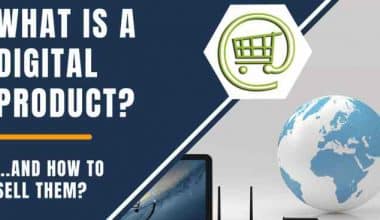A pull marketing strategy focuses specifically on increasing product demand to increase profits. Many businesses use pull marketing strategies to increase sales of new products, retain existing customers, and gain new customers. In this article, we will define pull marketing, provide examples of various types of pull marketing strategies, and discuss the benefits and drawbacks of using it. Also discussed is the distinction between push vs pull marketing.
What is a Pull Marketing Strategy?
Pull marketing strategies aim to increase the number of consumers interested in purchasing a specific product. It frequently entails persuading a consumer to actively seek out a product to convince retailers to stock it.
Pull marketing brands will reach out to customers through a direct marketing campaign. Customers then go to a retailer and buy the product. This enables the producer to sell the product as well as fill stock based on consumer demand.
Consumers benefit because they will not have to settle for whatever product is in stock elsewhere simply because it is available. Instead, through your pull marketing strategies, they will see the true value of your goods or services and will be more willing to make the effort and reinvest in the long run if the proposition is compelling enough.
Types of Pull Marketing Strategies
There are numerous types of pull marketing strategies used by teams to gain customer interest, including:
#1. Search Engine Optimization
Search engine optimization (SEO) is the process by which businesses modify their websites to include popular keywords to rank higher in search results. High-ranking search results can increase a company’s exposure to customers, potentially leading to more sales and new customers.
#2. Advertisements
Numerous types of advertising can aid the success of a pull marketing strategy, including:
Marketing
Because needs and desires can motivate a customer to make a purchase, responding to customer demands is an important component of pull marketing strategies. Content advertising focuses specifically on how a product can meet consumer demand.
Pay-per-click Advertising
Pay-per-click advertising, also known as paid advertising, displays products to customers based on their search queries and customer data, such as demographics, occupations, or ages. A college student, for example, may come across an advertisement for a new laptop after searching for cheap laptops online. Paid ads can appear on social media, websites, or videos. While paid advertising is more expensive than other forms of advertising, it can be very effective in targeting specific customers for your pull marketing strategy.
Outbound Advertising
Outbound advertising is a marketing strategy that involves contacting customers via email or phone about a product that they might be interested in. This type of advertising has the potential to reach potential customers who have already interacted with the company or who have shown no interest at all.
Because of the relevance that social media may have for some customers, social media marketing can be important for a pull marketing strategy. Many platforms allow you to use hashtags to help consumers find your content when they search for specific keywords.
Benefits of Pull Marketing Strategies
The following are some of the benefits of a good pull marketing strategy:
#1. Additional Sales Opportunities
Pull marketing strategies enable a company to create an additional sales channel with its customers. Pull marketing creates new opportunities for increased customer loyalty by creating advertisements specifically to direct customers to a product. Furthermore, pull marketing may also employ marketing tactics that the company has not previously employed, potentially broadening advertising even further.
#2. Increased Product Demand and Awareness
Pull marketing can result in significant increases in demand rates. This can increase supply to compensate for increased demand, potentially leading to more sales. Pull marketing can result in a product that sells extremely well, increasing customer awareness and retention.
#3. More Helpful Data
Because pull marketing increases demand, companies that use it may have access to more data. More demand data helps a company understand why a product sells well. Due to refocusing marketing strategies and increased traffic, social media and advertising data may also increase.
Backdraws of Pull Marketing Strategies
You should be aware of the following drawbacks of pull marketing strategies:
#1. Supplier Costs
Because pull marketing can increase demand, supply may have to increase to compensate. When using a pull strategy, a company may need to plan for various ways to increase supply. Increased supply can result in increased supplier costs, whether they are costs for outsourcing or costs for increased productivity within the company. Companies can prepare for increased supply by allocating funds to supply efforts.
#2. Marketing Costs
Because pull marketing strategies may employ multiple advertising efforts at the same time, retail costs may rise as a result of their use. Third-party advertising through partnerships with various companies incurs additional costs. Similar to accounting for supplier costs, it is critical for businesses to budget for potential increases in marketing costs.
#3. Maintaining Customer Loyalty
Because customer loyalty programs necessitate tactics such as discount offers and free products, their upkeep incurs additional costs. For example, if a company offers a discount to all new customers on their next purchase, profits on those subsequent sales may suffer.
Additional funding and task organization may be required for sending additional emails to customers, organizing exclusive customer offers, and assigning employees to make cold calls. Companies that hire or train more employees can compensate for the increased work associated with customer loyalty programs.
Push Vs Pull Marketing
Push vs. pull marketing appears to be diametrically opposed at first glance. However, they do overlap in practice. We’ve discussed the main differences between push vs pull marketing and how they appear in practice.
#1. Demand:
Push marketing works best with products that people already know about or are interested in. Pull strategy is effective for selling something new to people and creating demand where there was none or little, to begin with.
#2. Time Duration:
Push marketing is more concerned with short-term sales, whereas pull marketing may take longer to establish.
#3. Product Type:
Pull strategy products are typically one-of-a-kind in some way, and audiences may need to be told exactly what they are. Push marketing products are well-known to audiences and typically necessitate little to no comparison shopping.
#4. Goal:
Push marketing seeks to close a sale as soon as possible, whereas pull marketing builds an audience gradually and often from scratch.
#5. Cost:
Both types of marketing campaigns are only as good as their creators. They may use similar channels, but they serve different audiences. It truly depends on the product and the audience you’re attempting to reach.
In a nutshell, the differences between push vs pull marketing strategies revolve primarily around the brand’s relationship with the audiences it is attempting to reach and the sales goals it is attempting to achieve.
Push Vs Pull Marketing Strategy Examples
Amazon is a great example of a company that profits from both push-and-pull marketing strategies.
To begin with, its warehouses are strategically located near major cities and metropolitan areas. When it comes to selling its products, Amazon is a pure-push company because its service meets customers where their demand is.
Simultaneously, they employ a pull strategy to promote third-party sellers through tools such as retargeting ads, which entice users to return to the site and complete their purchase.
Both are extremely effective. Without their warehouses, Amazon would have fewer sellers because space is often an issue for brands with physical inventory, potentially discouraging new businesses from joining the site. And they would not profit from their sales if they did not promote their sellers’ products.
Examples of Pull Marketing
Some examples of pull marketing strategies from various industries includes:
#1. Law
Finzer and Sons want to increase demand for its services by utilizing social media as part of its pull strategy. Finzer and Sons begin an advertising campaign that hosts advertisements specifically on social media after creating a social media account. New clients contacted the law firm through this campaign after seeing the firm’s social media posts and advertisements.
#2. Technology
Owen’s Fixit, a computer repair shop, begins a pull marketing strategy by focusing on email and phone calls to previous customers. The company contacts previous customers to solicit feedback on their service and how it can be improved in the future. In addition, the company sends emails to previous customers offering discounts on refurbished appliances.
As a result, the company increased its sales by contacting previous customers who required new repairs.
#3. Automotive
As part of its pull strategy, car dealership Annie’s Automotive hosts an open house. To increase attendance, the company creates both physical advertisements in the local newspaper and social media advertisements. Annie’s Automotive received a large turnout for its open house thanks to numerous advertising campaigns, resulting in some new customers.
What Is Pull Effect Marketing?
Pull marketing is a strategy that uses search engine optimization (SEO) and other non-intrusive methods to attract customers to a brand. The ultimate goal is to raise consumer awareness and demand for a brand and its products.
What Is an Example of Push Marketing?
Examples of Push Marketing Strategies:
Direct selling to customers—for example, a car salesman who meets with customers in the company’s car showrooms. Point of Sale (POS) displays for trade show promotion, and packaging designs to entice customers to buy.
What Is the Difference Between the Pull and Push Strategy?
Simply put, push marketing involves putting your brand in front of people (usually with paid advertising or promotions). On the other hand, pull entails implementing a strategy that naturally piques the interest of consumers in your brand or products (usually with relevant and interesting content).
Does Coca-Cola Use a Push or Pull Strategy?
Coca-Cola has a large distribution network and employs a push strategy, in which it uses its sales force and trade promotion money to entice intermediaries to carry, promote, and sell the product to end users, i.e. customers.
Is SEO Push or Pull Marketing?
Search engine optimization (SEO), creative social media content, and customer reviews are the most common types of pull marketing. Whereas SEO has long been proven to be the type of marketing with the most consistent ROI, social media has only recently exploded as a business channel.
What Is the Push and Pull Model?
The goal of a push-and-pull distribution strategy is to direct your promotional route to the market. Either by pushing the product toward customers or by pulling the product through the retail chain toward them.
How Do You Use the Pull Strategy?
A “pull” strategy generates additional demand for a product that is already in stores. Pull strategies work well for highly visible brands or brands with high brand awareness. This is typically accomplished through advertising.
Does Apple Use a Push or Pull Strategy?
Apple is currently employing a push marketing strategy by “pushing” or improving its other product lines, such as the Mac. However, it also employs a pull strategy that focuses on branding. Pull strategy principles can also be applied to a well-known “push” strategy, and vice versa.
Conclusion
For decades, people have debated the benefits and drawbacks of pull and push marketing. Marketing professionals frequently employ both strategies as part of their company’s marketing plans. Whichever solution you choose, make sure it provides the level of organization, visibility, and attention to detail that even the most complex strategies require through features like Gantt charts and dashboards.
Pull Marketing FAQs
Are TV ads push or pull marketing?
Push marketing focuses on attracting new customers by directly presenting marketing materials to them rather than enticing them more subtly. Outbound marketing efforts include freeway billboards, television advertising, text notifications, direct email marketing, and other methods.
Does McDonald's use a push or pull strategy?
A fast food restaurant, such as McDonald’s, uses a pull system, whereas a catering service uses a push system. When a customer orders a hamburger at McDonald’s, the server takes one from the rack, and the hamburger maker keeps an eye on the rack and makes new burgers when the number gets too low.
Does Nike use a push or pull strategy?
Nike’s swoosh logo and images play an important role in the company’s advertising. It uses extensive media coverage in electronic, social, and print media to promote its brand image, utilizing a smart push and pull strategy for its customers.
- Pull Strategy: Guide to The Pull Marketing Strategies (+Free Tips)
- Push Strategy: Marketing Practices & Comparisons (+Free Tips)
- Docker vs. Azure Container Registry: Comparing Benefits, Implementation and Use Cases
- 6 Effective Attributes of a Successful Entrepreneur
- BEST EMAIL MARKETING FOR SMALL BUSINESS: Top 19 Picks (+ Detailed Guide)






